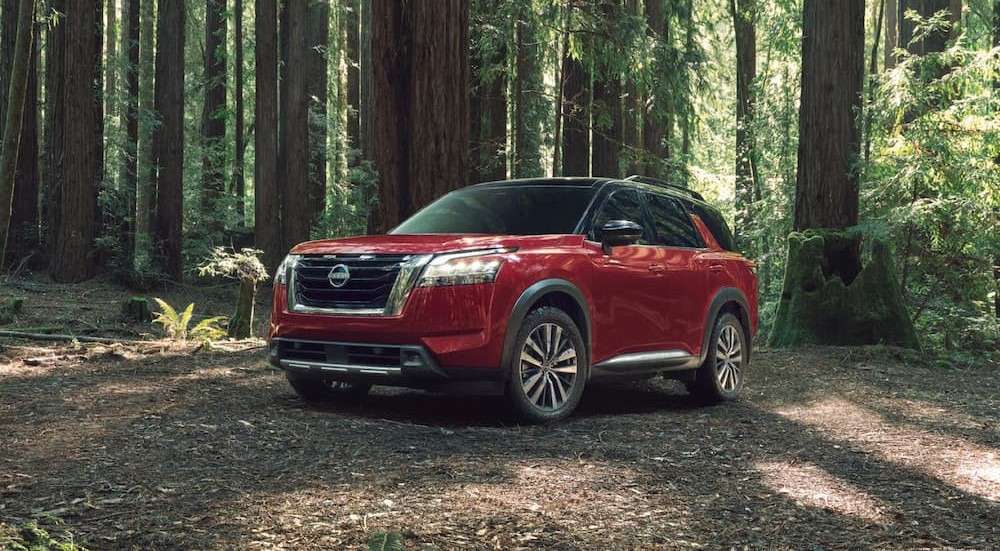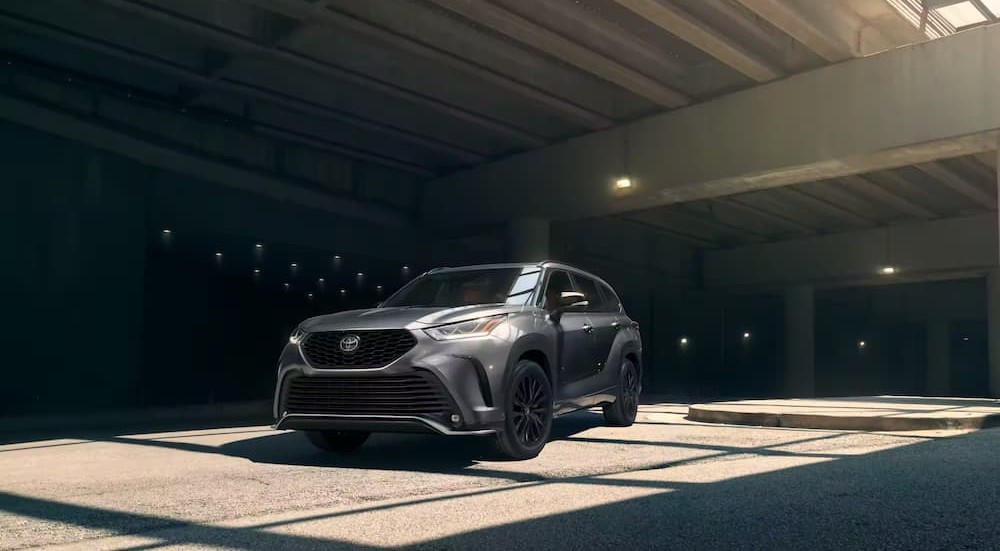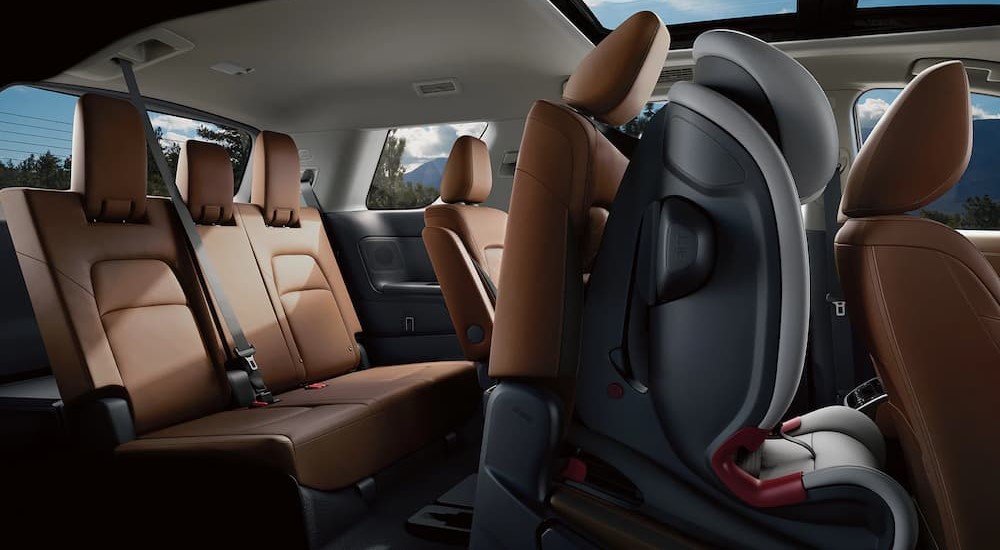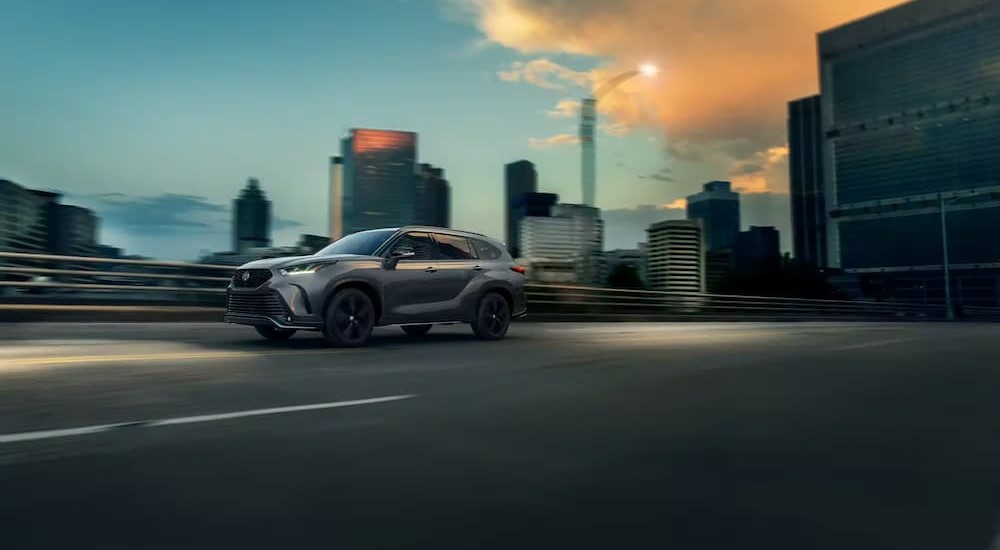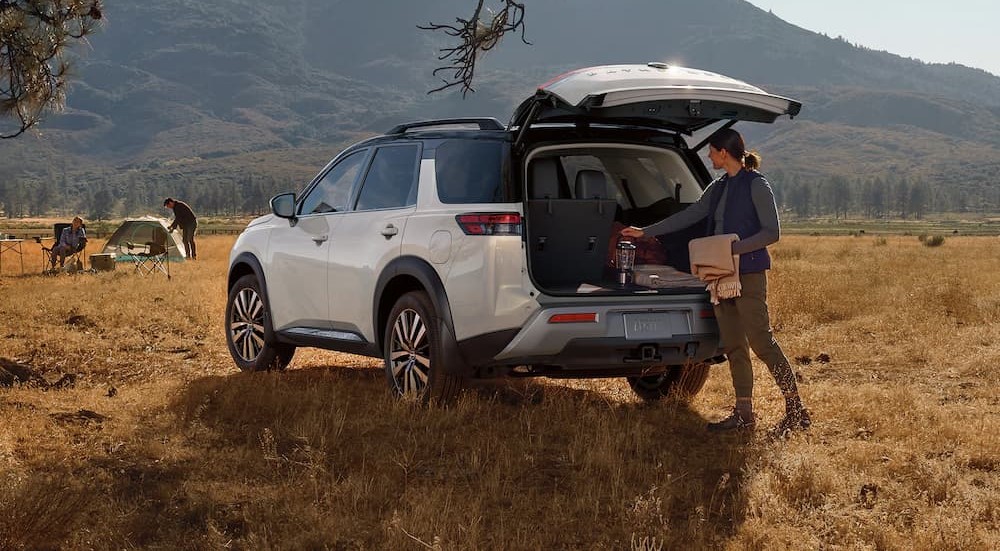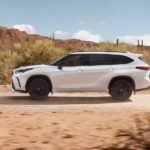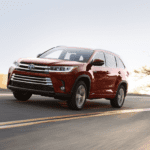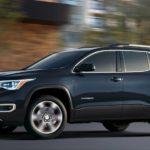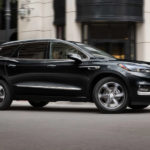If all you need are five seats, then you have a whole myriad of options for body style. You can get a sleek sedan, a sturdy crossover, or a hard-working truck—but if you have a big family and want a larger option with room for everyone, you’ll have to find something with three rows of seating. Luckily, you still have plenty of options; you don’t have to get a frumpy minivan or a massive full-size SUV because there are plenty of great midsize SUVs that have spacious interiors, modern safety features, and entertainment systems that can keep you and your little ones engaged on longer drives.
Let’s focus on two popular models in this segment: the 2023 Nissan Pathfinder vs 2023 Toyota Highlander. Both are solid options, but when choosing a family car, you want to ensure you’re getting the very best. Let’s dive into the details and see which one has more to offer the average American family…
Safety First
Staying safe on the road should be your top priority, but it’s especially important when your kids are in the backseat; they’re your most precious cargo, and you want to protect them from danger—but, on the flip side, they could be the danger if they’re loud and distracting. Driver assistance technology can help take some of the pressure off.
Both the Pathfinder and the Highlander come standard with a suite of driver assistance tech across all trim levels, so you don’t have to pay extra to get high-tech features like forward collision warning, automatic emergency braking, pedestrian detection, lane departure warning, or automatic high beam headlights.
But both models also have safety features that don’t come standard on the base trim. For instance, extras like traffic sign recognition (which provides an icon showing you speed limit signs and other traffic signs on the dashboard) and adaptive cruise control (which autonomously slows you down and speeds you back up to match the flow of traffic on the highway) are standard on the Highlander L, but not on the Pathfinder S. However, the Pathfinder S comes standard with several features that aren’t available on the Highlander L…
A blind spot warning lets you know when there’s a vehicle in your blind spot so that you don’t try to change lanes in a dangerous situation. A rear cross-traffic alert warns you when vehicles are passing behind you while you’re in reverse; this comes in handy when backing out of a parking space in a busy lot. The rear sonar system uses advanced sensors to accurately detect items behind your vehicle better than a camera alone could. Rear automatic braking detects large stationary objects (like trash cans or bicycles) behind you and automatically hits the brakes if a collision is imminent.
Those features missing from the Highlander L are more significant than those that don’t come standard on the Pathfinder S, working to detect danger and prevent collisions rather than just coming in handy when you don’t spot a speed limit sign or want to cruise down the highway without needing to pay much attention to slowdowns. Looking at the more fundamental safety features, both SUVs have their bases covered, offering standard features like LATCH to help you secure car seats and well-designed cabin frames designed to handle an impact with minimal damage to passengers.
In fact, both the 2023 Highlander and the 2023 Pathfinder have a five-star rating from the National Highway Traffic Safety Administration and have been named a Top Safety Pick+ by the Insurance Institute for Highway Safety. So it comes down to the more high-tech driver assistance features—and because the Pathfinder has the more comprehensive standard suite, we give it the edge in this category.
Interior Comfort
Both SUVs can seat up to eight passengers with bench seats in the second and third rows. For extra comfort in the second row, the middle bench can be switched out for a pair of captain’s chairs, bringing the maximum passenger capacity down to seven. With slightly larger figures for length, width, and height, the Pathfinder is the large of the two models.
Though a few inches don’t make a huge difference when maneuvering or finding a parking spot, it can make a big difference in passenger comfort. The Pathfinder provides more head, leg, hip, and shoulder room in the front row, so you’ll have plenty of space to yourself. The second and third rows are also spacious, so your kids will stay comfortable from Point A to Point B, no matter how long the drive between them is.
Beyond space, plenty of added features contribute to passenger comfort. The Pathfinder and Highlander both feature tri-zone automatic climate control across all trim levels, so the whole family doesn’t have to agree on a single temperature.
Once the kids get old enough to have their own cell phones, you’ll want to ensure the entire family can keep their devices charged while en route. The Highlander has one USB-A port and three USB-C ports across all trims. On the most basic trim, the Pathfinder features two USB-A ports and two USB-C ports; upgrade to the SL, and you’ll get a third USB-A port, while higher trim levels feature four USB-A ports for a total of six charging stations—one more than you can get on the Highlander.
Both SUVs also offer a wireless charging pad as an available feature for those looking to cut back on their cord usage.
Vacation Potential
These SUVs can certainly be used for day-to-day transportation and errand running; when properly equipped, they can also help take your next vacation to the next level. Both are available with all-wheel drive, giving them extra traction and greater ability to leave paved roads behind.
When paired with AWD, the Highlander has a Multi-Terrain Select system that lets you switch between four different modes (Mud/Sand, Rock/Dirt, Snow, and Normal) so that you can get optimal performance in various situations. The Pathfinder’s Intelligent 4×4 system features a system that offers seven Drive and Terrain modes (Standard, Sand, Mud/Rut, Snow, Eco, Sport, and Tow), giving you a greater variety of options. And models of the Pathfinder that use FWD still come with a five-mode version of the system, which is good news for those who choose not to spring for AWD.
If you want to bring a boat or trailer along for your outdoor getaway, you should closely examine their towing capabilities. Both SUVs offer features designed especially for towing, like trailer sway control and camera views that can help you line up your hitch with your trailer, park safely, and compensate for your expanded blind zones. But when it comes to stats, the Pathfinder is the clear superior, with a maximum capacity of 6,000 lbs compared to the Highlander’s 5,000-lb capacity.
So, Which One Wins?
When a big purchase affects the entire family, you want to ensure you’re getting the very best. So while both of these vehicles have plenty to offer, we recommend the Nissan Pathfinder over the Toyota Highlander.
While the Highlander is a reliable model with a lot to love, the Pathfinder offers a more comprehensive suite of standard safety features, more interior space, and a bigger towing capacity. This wide range of strengths makes it a well-rounded option, which is a big plus for the unpredictable nature of parenthood.
